Mesa Boogie amplifiers have an impressive history. From humble beginnings they have grown to be a huge name within the guitar world.
Having quickly become known for their high gain and heavy sound their amps have been and are used by some of the biggest names in rock and metal.
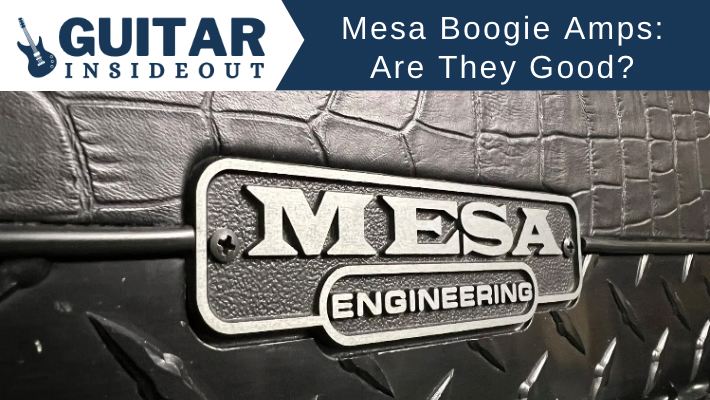
But are they just boutique amps for heavy music? Or do they have versatility beyond metal? And do they live up to the hype to be worth their high prices?
Let’s take a look at the history of Mesa Boogie, who uses them, what they sound like and whether they could be the right choice for you.
History of Mesa Boogie Amplifiers
Mesa Boogie was founded in 1969 by Randall Smith. Smith began by fixing amps and caught the attention of Dave Kessner, a keyboardist, who proposed opening a music store together.
This was called ‘Prune Music’ and opened in 1967. They gained some impressive customers like the Grateful Dead, Carlos Santana and The Steve Miller Band with Smith doing the repair work for their gear.
Then in 1969 Smith was asked to modify a Fender Princeton amp and increase the volume by taking it from a 20 watt to 100 watt output. He asked Santana to try it out and he remarked “That amp really boogies!” Which is where the ‘Boogie’ part of Mesa Boogie came from.
Sensing he was on to something and getting more requests for similar modifications Randall Smith decided to set up ‘Mesa Engineering’. The name came from the work Smith was doing for Mercedes rebuilding their engines.
In order to get the parts of both amps and the engines he was working on he needed a company with an official sounding name. So settled on ‘Mesa Engineering’.
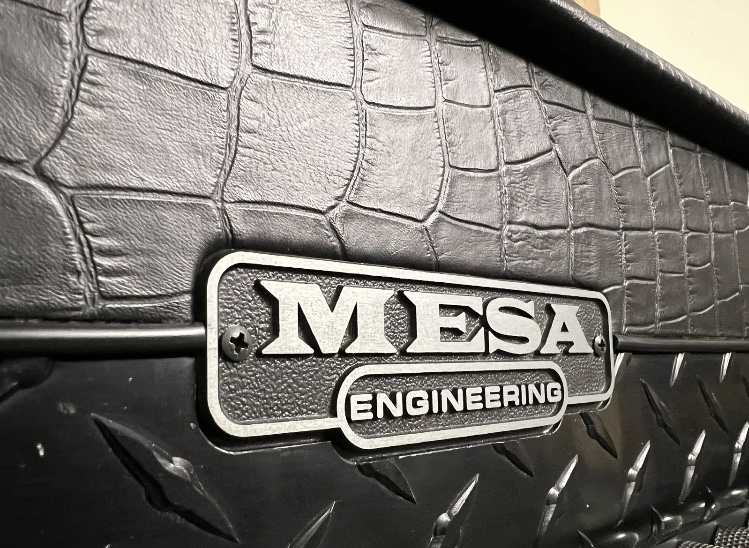
He continued to work on amps and modifying Fenders and eventually created the now renowned “cascading” gain stages. He released his first amp under the Mesa Boogie brand in 1972, a Princeton Boogie, which had the increased gain and volume.
Carlos Santana, who had tried out the original design, took and played one in a jam session with the Rolling Stones, who loved the sound. They would then use Mesa Boogie amps exclusively on their next tour and the brand continued to grow.
Through the 1970s and 80s Mesa Boogie became known for its high-gain “Boogie” amps, which were embraced even further by rock and metal artists.
Key Mesa amps like the Mark Series and Dual and Triple Rectifiers became staples of heavy music. Their amps became most known for having very thick and saturated distortion while still having rich cleans.
More recently Mesa Boogie were bought by Gibson in 2021. This worried fans of the brand that the high quality and they were known for might be diluted by so far Mesa remain unchanged.
Where are Mesa Boogie Amps Made
All Mesa Boogie amplifiers are made in the USA. Unlike many of their competitors that produce their amps in China Mesa Boogie have always stuck to building their amps in America.
They have a custom shop in Petaluma, California and since their beginnings have made their amps there. They pride themselves on hand-built and quality amplifiers.
The current lineup of amps built in the USA is:
- Mark Series (Mark I, II, III, IV, V)
- Rectifier Series (Single, Dual and Triple)
- California Tweed Series
- Fillmore Series
- Triple Crown Series
- Badlander Series
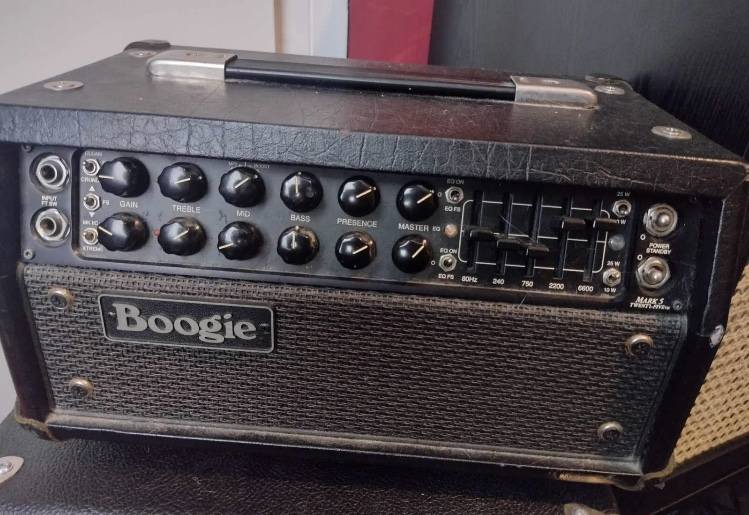
Are Any Mesa Boogie Amps Made in China?
No, none of them are made in China. They are only built in the USA.
Who Uses Mesa Boogie Amps
So many fantastic artists and guitarists use or have used Mesa Boogie amps over the years. Here’s a few of the most famous and well known:
- John Petrucci of Dream Theater
- Mark Tremonti of Creed and Alter Bridge
- Bruce Springsteen
- Dave Grohl of Foo Fighters
- Dave Mustaine of Megadeth
- Carlos Santana
- Marty Friedman
- John Sykes of Thin Lizzy and Whitesnake
- Alex Lifeson of Rush
- Zakk Wylde of Ozzy Osbourne & Black Label Society
- Brent Hinds of Mastodon
- Joe Bonamassa
- Adam Christianson of Architects
- Claudio Sanchez of Coheed and Cambria
As you can see most of those are metal and hard rock guitarists. But Mesa Boogies are also used by pop, blues and even country artists. The likes of Bethany Cosentino of Best Coast, Blake Shelton, Rob Harris of Jamiroquai and more.
So they’re used by a huge array of guitarists and bands across pretty much all genres.
What Makes Mesa Boogie Amps Good
If you’re considering a Mesa Boogie then there a few things that makes them stand out.
Build Quality
Firstly, their build quality is top notch. They’re very sturdy and super reliable. If you’re doing a lot of gigging then they’ll comfortably being able to sustain the wear and tear that comes with being on the road.
And being handmade in the US gives them that extra attention to detail you might not get from a Chinese made amp.
High Gain
Very few amps do high gain as well as Mesa Boogies. They practically invented the modern high gain amp sound that you hear across so much rock and metal.
If you’re into heavier styles of music then there’s a very good chance either you’re favorite band uses Mesa’s or had recorded with them.
And there’s a very good reason for that – they’re unbelievably good at it!
So if you’re searching for a high gain amp you have to consider a Mesa Boogie.
Versatility
While they excel at high gain they are capable of great clean and crunch tones too. They really are one of the most adaptable type of amps out there.
So you might be someone who only wants to play high gain. Which is fair enough and a Mesa will obviously work perfectly.
But if you want to play a lot of different styles, or you need some versatility and to be able to go from high gain to clean or a bluesy crunch, then a lot of Mesa’s can do it all. When compared to the other bigger and well known amps – Marshall, Fender, Vox etc. – they definitely have the most flexibility.
And even if you only want super cleans a Mesa is still a great choice. It’s hard to beat Fender when it comes to a clean tone but many Mesa’s can toe to toe with the best Fenders and make good alternatives.
Are They Handwired?
Even though Mesa Boogie are considered the first ’boutique’ amp maker they’ve always used PCB’s for their amps. The California Tweed is the only Mesa that claims to be handwired.
The Current Mesa Boogie Range
Like most amp makers the lineup of amps they sell changes often. Models get discontinued and replaced, but as of today the current Mesa Boogie lineup is:
Rectifier Series
The Rectifier series are probably Mesa’s most well known high gain amps. They have a very tight and modern distortion. The dual and triple rectifier amps defined the “Boogie” sound in metal and hard rock during the 90s and early 2000s.
Best for: high gain metal and rock. Has been used by metal, nu-metal, rock, emo, pop punk bands and more.
Avoid if: You’re only interested in clean tones and need something small and quiet!
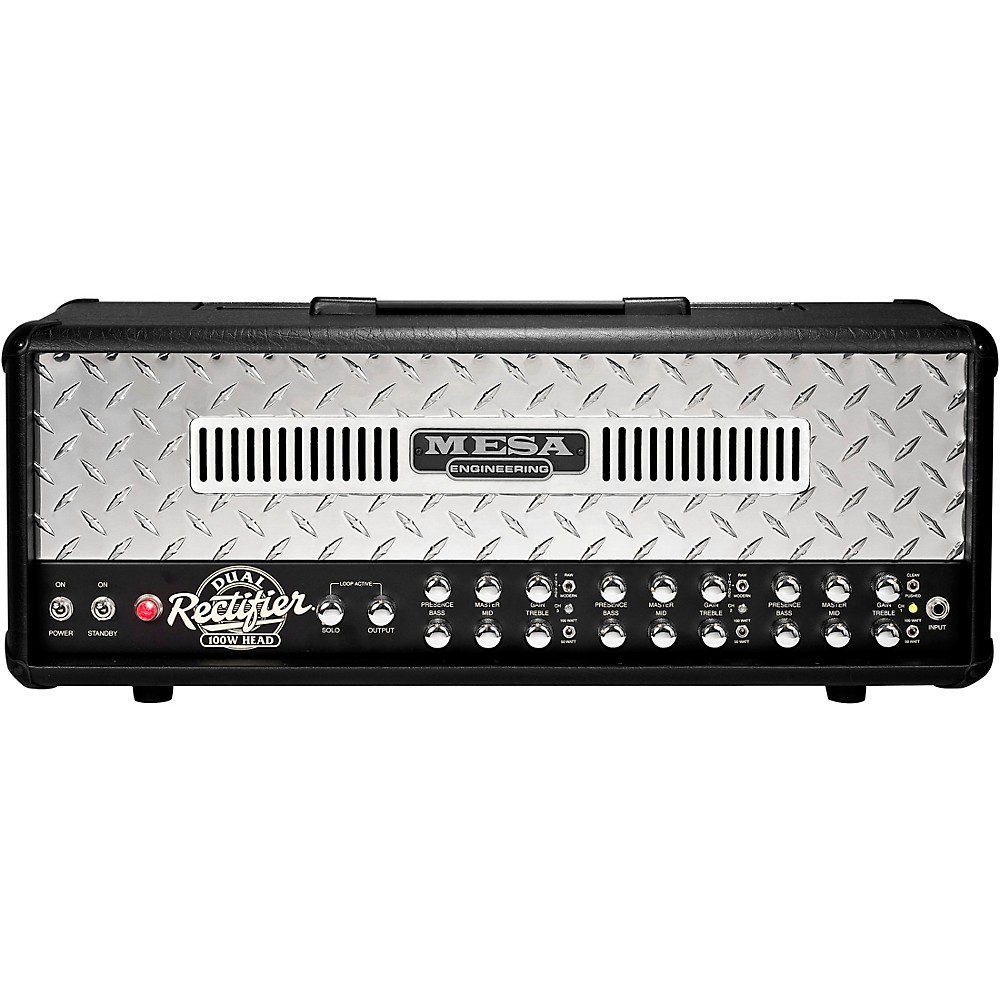
Mark Series
The Mark series feature more classic rock and blues inspired circuits. They have a looser, vintage type of distortion compared to the Rectifiers.
Best for: versatility and huge ability to shape your tone.
Avoid if: You don’t like having to tweak your amp.
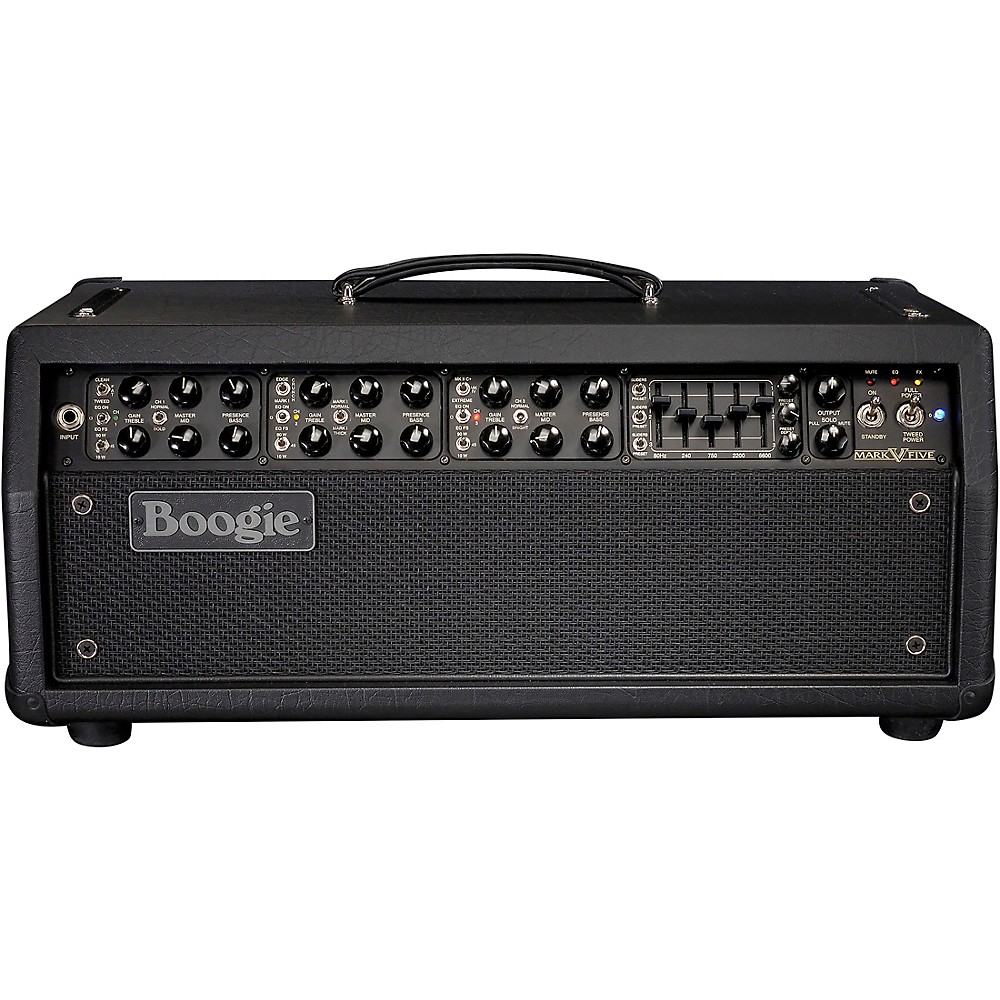
California Tweed
Mesa’s take on vintage Fender tweed amps. Captures the cleans and warm, organic overdrive of 1950s Fender amps used in early rock and blues.
Best for: Warm clean tones, vintage rock, blues, country.
Avoid if: You need modern high gain tones.
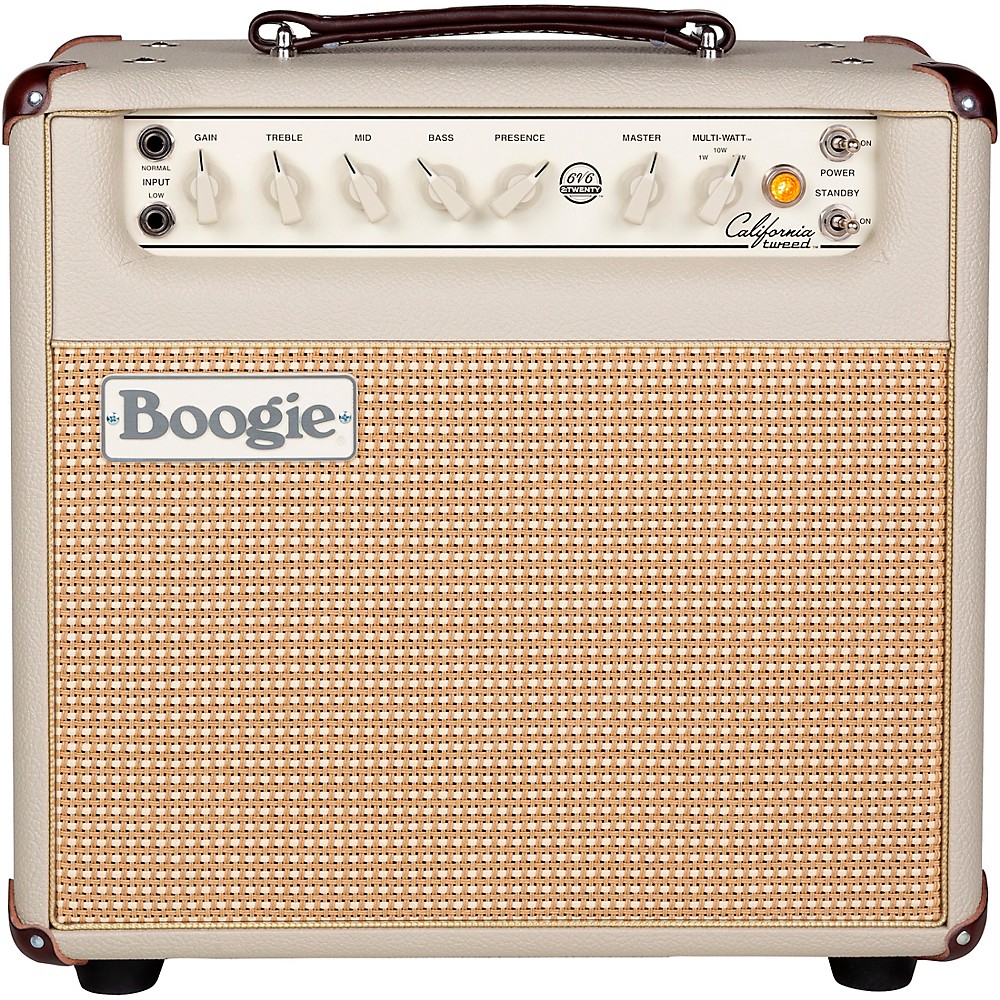
Fillmore
A series that takes inspiration from
the clean tones of blackface Fender amps popular during the 60s. Known for shimmering cleans and rich reverb.
Best for: Simple blues and crunchy rock.
Avoid if: You need high gain or lots of versatility.
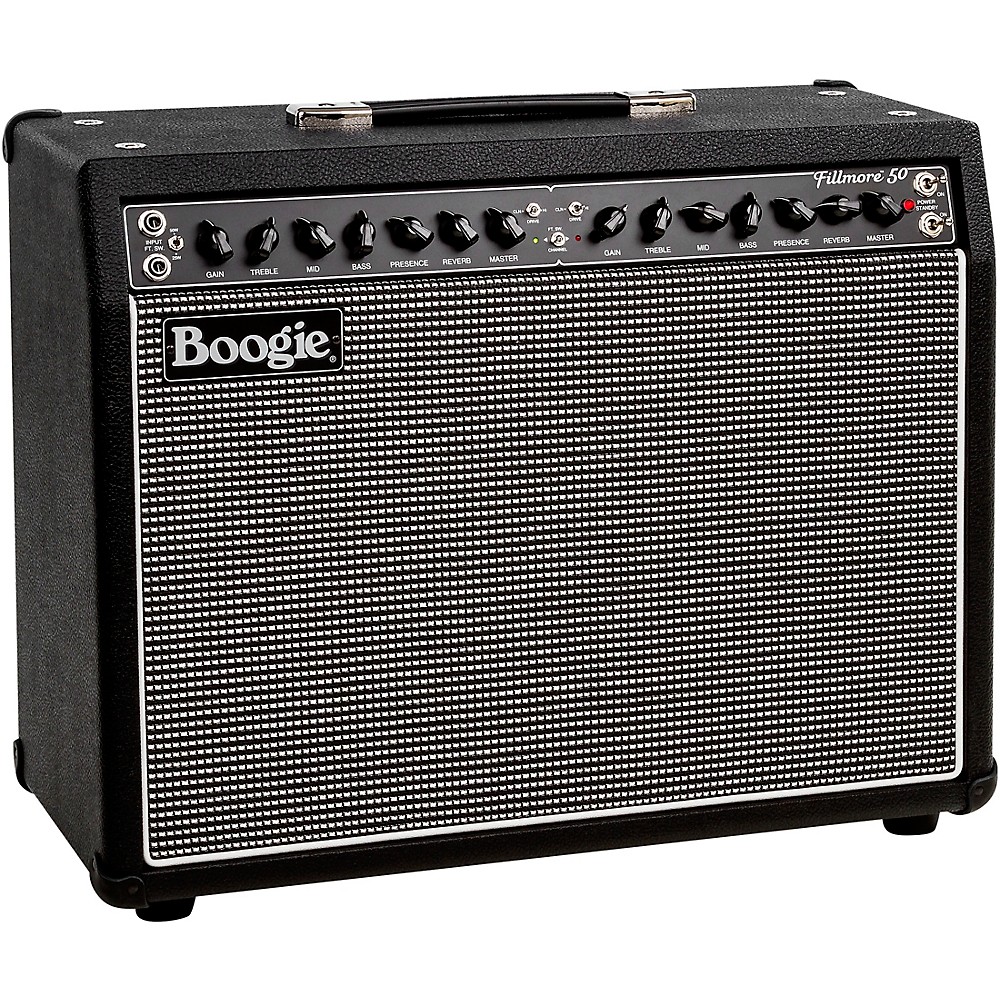
Triple Crown
Mesa’s modern 3-channel amps with clean, crunch, and lead channels. Very versatile for a range of tones going from clean to crunch to high gain with a mix of British and American voicings. Quite different to most other Mesa Boogies.
Best for: Everything. If you need an amp that can do it all and seamlessly switch between every style imaginable – from jazz to metal – then the Triple Crown is for you.
Avoid if: Your bank balance isn’t big!
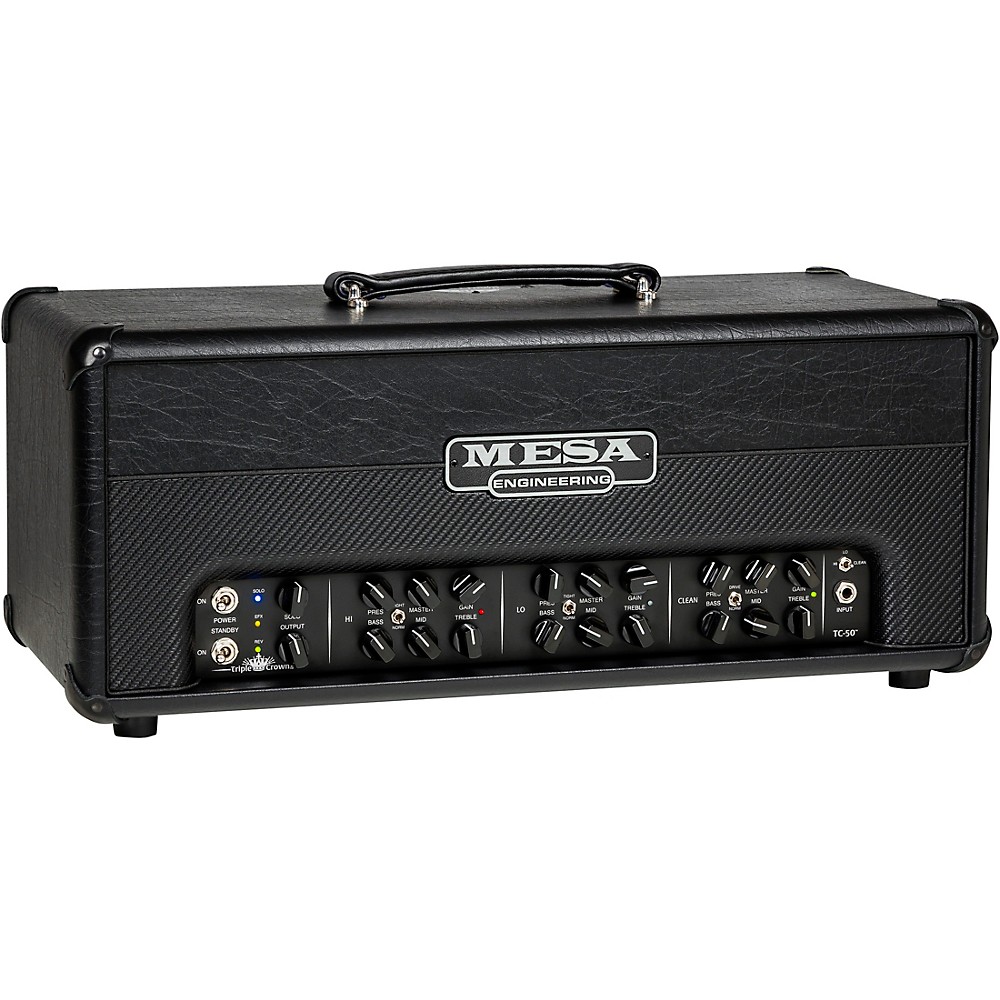
Badlander
The newest Boogie series, the Badlander was released in late 2022. More compact in size but still packing a punch. It’s similar to the Rectifer series although does it’s own thing and with a bit more of a British flavor. It has a very flexible EQ shaping and gain structures.
Best for: Modern metal/hard rock on a budget. More portable than a full stack.
Avoid if: You just need basic cleans.
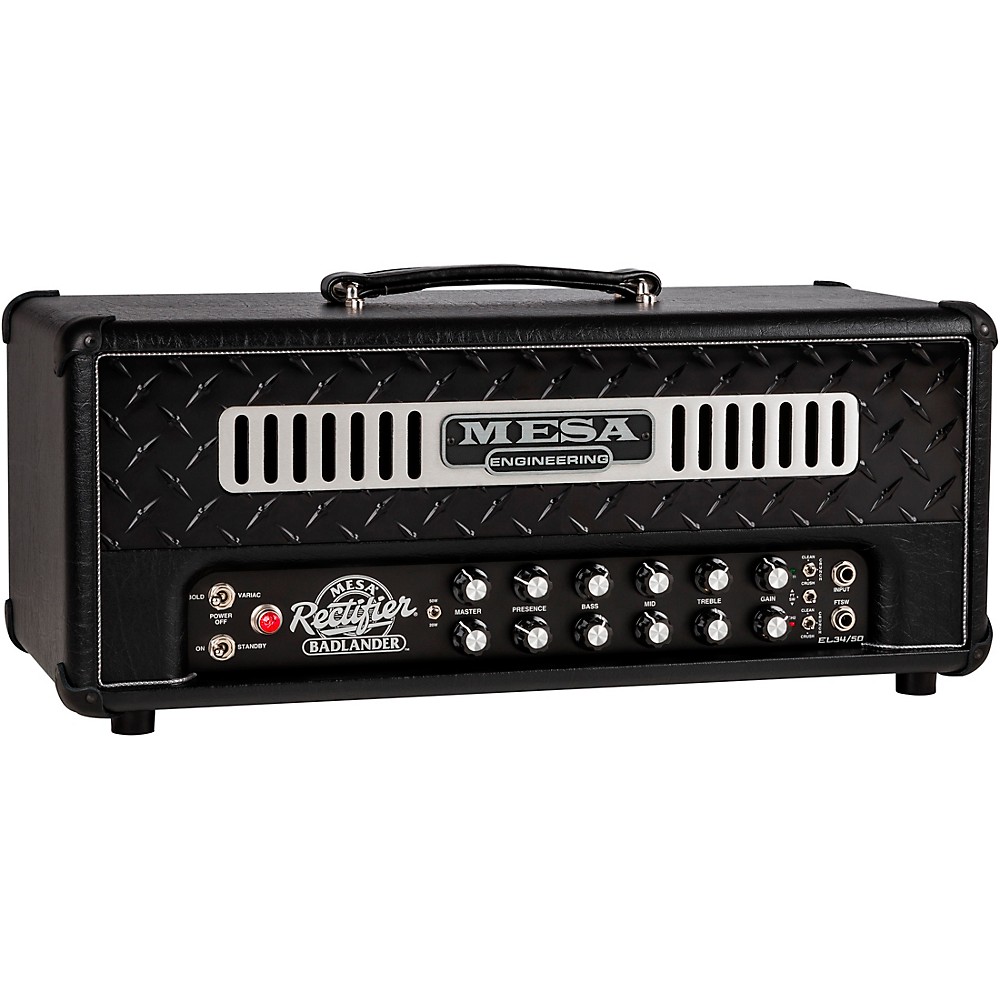
Discontinued Amps
These are all the Mesa Boogie amps that they no longer produce. You can still pick them up second hand though and as they’re so well built will likely work just as good as new.
- LoneStar
- Blue Angel
- Dual Caliber
- Express Series
- Electra Dyne
- Heartbreaker
- Nomad
- Roadster
- Road King
- Stiletto Series
- Transatlantic
- Tremoverb
(There are probably more to add to that list going back decades but that’s all I can’t think of for now!)
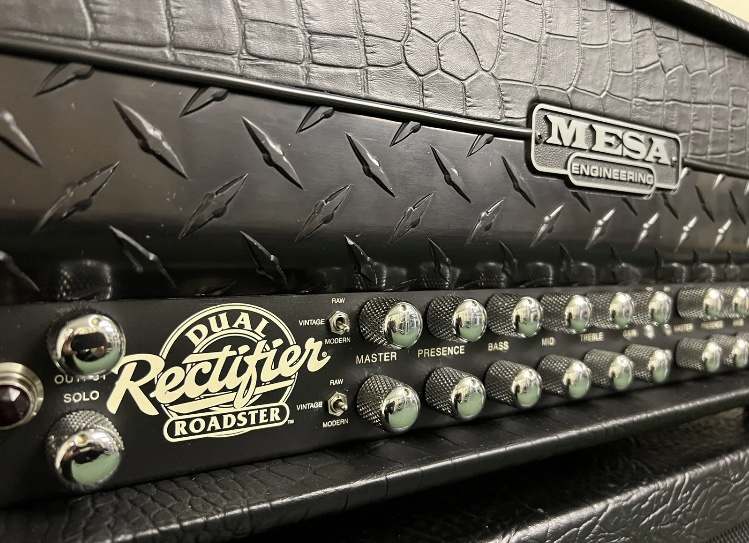
Why are Mesa Boogie Amps so Expensive?
It all comes down to the way they’re built. Simply:
- Handbuilt in the USA – Labor and material costs are higher than if they outsourced manufacturing to places like China.
- Premium components – Mesa uses high end parts like custom transformers and tubes. They cost a lot more which is passed on to you in the price.
- Brand reputation – People are willing to pay more for the Mesa Boogie name as it’s got such a good reputation.
- Boutique business model – before they were bought by Gibson Mesa Boogie were still a small company and produced amps in relatively smaller quantities at a higher quality level. This made costs much higher. (Although I doubt Gibson are going to be reducing prices any time soon!)
So the higher pricing comes from their “custom shop” approach whereby they focus on quality and tone over affordability.
It’s noticeable that Mesa have never really had a “budget” line of amps. Most other big amplifier manufacturers do cheaper solid state or small tube amps made in China.
Mesa Boogie have never gone down that route and always stuck to high quality and high priced products. You can argue it’s meant they aren’t accessible to a lot of players but it’s helped establish themselves as a premium brand with a reputation for very good amps.
What are Mesa Boogie Amps Good for?
More so than most other amps Mesa Boogies are renowned for being good at basically everything! An awful lot of the amps in their lineup are very versatile and comfortable doing sparkly cleans through to extremely high gain.
They are probably most well known as metal and hard rock amps. The Mark Series and Dual/Triple Rectifiers are staples in those genres and arguably the most famous Mesa amps.
But that doesn’t do justice to those amps or the other Mesa’s available.
The Dual Rectifier is a real favorite of mine, probably because of the type of music I listened to as a teenager. It was everywhere back then. And it’s phenomenal at high gain and chugging.
But it’s also good at anything you ask of it. It does an incredible bluesy tone, the cleans are hugely underrated and it just sounds amazing full stop.
And you can say the same for many other Mesa Boogies. Models like the Lone Star or California Tweed are great for classic rock, blues and more. The clean tone on the Lone Star is incredible.
Personally I think they’re the best all rounder amps that aren’t super expensive, boutique types.
And I believe that’s backed up by the range of artists and bands who use them. Check out the list of who uses them above – yes, a lot of metal and rock bands, but there’s also a lot of country players and pop or session musicians too.
So, while they built their reputation on metal tones, they are suitable for anything from metal to jazz. Just good at everything!
Are Mesa Boogie Amps Good for Beginners?
No, they’re definitely not beginner amps. If you’re a beginner or fairly new to guitars in general and thinking of getting a Mesa Boogie – don’t!
It’s not that they’re not great amps. As we’ve established they’re awesome.
It’s that they’re really not beginner friendly. While many amps are straightforward and easy to use or learn, Mesa’s are the opposite.
They’re notoriously difficult to dial in a good sound or tone. Set a Fender to everything at noon and it’ll sound decent. Yes, if you tweak it and adjust it’ll sound better but you can still use it with all the knobs set to midday.
Do that with a Mesa Boogie and chances are it’ll sound terrible. Or at least not very good and certainly not getting anywhere near to the potential the amps has.
They need you to have good ears and some understanding of amp settings to get the most from them.
On top of that there’s the fact that every Mesa is different and you need to read the manual thoroughly to understand exactly how it works. A lot of the time the controls are far less intuitive than other amps and often act in a completely different way.
Most amps you turn up the treble and you get more treble, right? Not on a Mesa! Turn up the treble and it increases the gain too.
And most Mesa’s have a huge amount of knobs and EQ controls. Seriously, look at this on a Mesa Boogie JP-2C head:
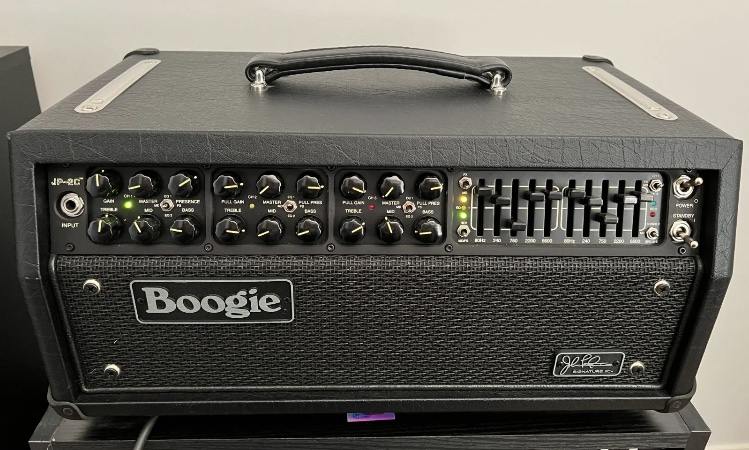
That can be a bit intimidating! Especially when you don’t really know what you’re doing.
Lastly – they’re so expensive! If you’re new to the guitar you might not even be playing it in 6 months or a years time. You don’t want to have spent a huge amount on an amp that you’re not going to use.
So my advice for beginners is hold off on getting a Mesa Boogie until you’re a bit more experienced. They’re amazing, but during the early stages of your guitar journey a simpler amp will serve you better.
And if you stick with it you can always upgrade to a Mesa Boogie down the line.
Are Mesa Boogie Amps Good for Metal?
Oh yes! Amps like the Mark IV and Rectifier series are not only synonymous with metal but have played a huge role in the sound of modern high gain metal.
They’ve been a fundamental and important part of the sound of heavy guitar music for decades.
And Mesa’s have so much gain on tap they’re almost designed for metal. Combine that with their sculpting options like a 5-band EQ to shape tight, crushing metal tones and it’s a match made in heaven.
That’s before you look at how many famous metal acts, like Megadeth, Metallica, Dream Theater, Mastodon etc. rely on Mesa amps.
So I think we can safely say when it comes to playing metal it’s hard to beat a Mesa Boogie!
Are Mesa Boogie Amps Good for Blues?
Absolutely. They may be better known for rock and metal but Mesa’s are excellent blues amps when dialed in right.
The likes of the California Tweed and Lone Star models are designed specifically for blues and classic rock tones. The Mark Series also works really well for a blues rock sound.
You get that Fender like sparkling clean channel and the the drive channel can be diaper back for a smoother and less heavy overdrive tone – perfect for blues soloing.
So despite their high gain reputation Mesas are definitely blues-friendly amps too.
What about Mesa Boogie Cabs?
They’re good, and they go well with their corresponding heads. So the Recto cabs pair nicely with the Rectifier heads, Stiletto cabs with the Stiletto head etc.
But they are expensive. And I don’t think they’re so much better than other cabs to justify the price.
For example you can use an Orange cab with a Mesa head and it’ll sound great. And no worse than with a Mesa cab. But it’ll be a lot less expensive.
So is there any need to pay the premium for a Mesa cab? As far as I’m concerned it’s a no.
But if you’re in any doubt try out your Mesa head with the Mesa can and another can and see how they sound.
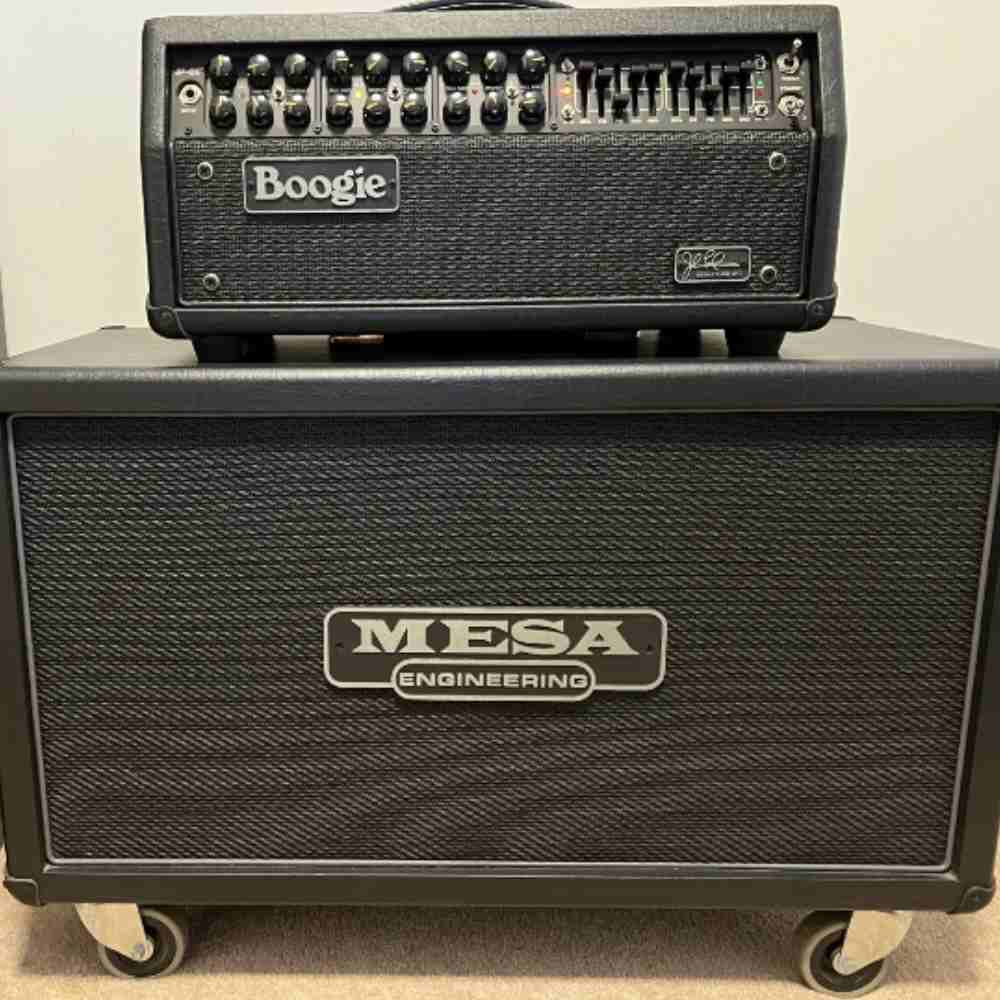
Are Mesa Boogie Bass Amps Good?
Mesa definitely aren’t as well known for their bass amps as they are their guitar amps. But they do a few decent bass amplifiers like the Subway series and WalkAbout.
I’ve got far less experience when it comes to bass amps in general and even more so with Mesa Boogies. So you might want to ignore everything I say, or at least take it with a pinch of salt.
But the reality is Mesa focus on guitar amplifiers far more than bass. And looking at their current range of bass amps it’s down to only the Subway series.
You could be forgiven for thinking that bass is a bit of an afterthought from Mesa. But that would be a bit harsh as their bass amps are well thought of.
They generally provide the same hallmarks of Mesa amps like build quality, reliability and tone. And like their guitar amp counterparts they’re not cheap!
Downsides to Mesa Boogies
We’ve established Mesa’s are pretty amazing amps. But they’re not perfect. Here a few of the drawbacks to them:
Price
Probably the most off putting part of Mesa’s is their price. They ain’t cheap!
Even the at the lower end of the price range they’re often significantly more expensive than a lot of their competitors. And their top amps, the likes of the Rectifiers and Triple Crown, are $2000+.
And it’s even worse for people outside of the US. Prices in somewhere like the UK are even higher!
Weight
Mesa combos can be ridiculously heavy. Things like the old Tremoverb combos are around 100lb!
Even the more modern combos aren’t much lighter. A Mark VII 1×12 combo is 58lbs / 26kg.
So if you’re lugging a Mesa amp to gigs you’re going to want to get a good chiropractor!
Complexity
So many Mesa’s have a huge number of knobs and switches. They take time to learn and then dial in your sound.
If you’re looking for something simple or to just plug in and play then most Mesa’s won’t be a good choice for you.
Loud Volume
It’s no secret that tube amps sound better when they’re turned up. There are some tube amps that work better at lower volumes but Mesa’s come alive when they’re properly pushed.
A lot of them do have good master volumes though. So you can play them a lower volumes but if you do then you’re missing out on what they’re truly capable of.
As I saw someone on Reddit say about tube amps and low volume – it’s like buying a Ferrari and then only driving it at 30.
Is Mesa Boogie better than Marshall?
It really depends on what you’re looking for in terms of tone. They aren’t that similar.
For instance Mesa Boogie gain is more modern and aggressive. Most Marshall’s are better suited for classic rock and blues sounds.
And they’re both pretty distinctive. You can very much tell the two apart when you hear them.
The clean tones are different too. The Mesa is sparklier whereas Marshall is less glassy and warmer.
So, are Mesa Boogie Amps Good?
If you’ve read this far you’ll know I’m a big fan of Mesa Boogies. And with good reason.
They come with a reputation that is hard to match and very few amp brands can compete with. Combine that with having some of the best high gain and versatile amps available and it’s a winning combination.
Yes, they come at a high price, and cheaper amps can definitely get good tones too. But if your budget allows then a Mesa will provide amazing tone and reliability for years.
Related
- Mesa Boogie V Twin Pedal Review
- Blackstar Amps Guide
- Orange Amps Guide